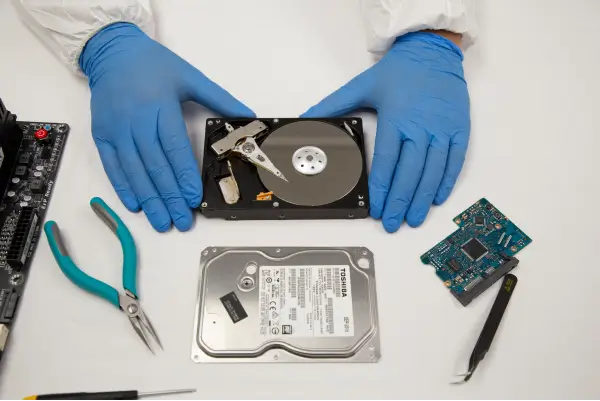Since flash drives hit the market in the late 1990s, they have grown to become one of the most popular devices for storing data. Companies give them away at trade shows with their company logo and schools give prospective students flash drives that double as a rubber bracelet. While these marketing techniques help organizations gain recognition, the product itself does little to protect data, especially for enterprise-level clients.
While many people are working from home during the COVID-19 outbreak, proper security protocols are more difficult to enforce. By implementing a proven-secure USB in corporate operations, workers can keep files secure both at home and the office.
Serious Risks with Insecure Media
One of the main causes of viruses and other potential data loss scenarios is human error. Employees may plug in an unfamiliar USB to an enterprise computer and click on unknown files. Many times a hacker or other malicious actor will purposely drop a USB in a certain area with the assumption that people’s curiosity will lead to a treasure trove of personal information.
Other times, the situation may be flipped and an employee or administrator will lose their USB or the device may become stolen. In this case, lack of encryption means that anyone who finds the device has access to whatever sensitive files are stored on that USB.
Companies who allow a BYOD (bring your own device) policy are only hurting their operations. With a variety of media entering the workplace, there is no way to regulate what information is being stored and by whom within the organization. Additionally, the device leaves company grounds on a regular basis as the USB belongs to the employee, meaning private company data such as client names, trade secrets, and upcoming product announcements are insecure.
Creating a Plan for Encrypted USB Use
In times of disaster, people regret not having made a plan to avoid the situation. Workplaces need to implement a data storage policy to ensure data stays safe and their operations are not disrupted by a breach, virus attack, or fines issued after violating privacy regulations on a larger scale. When creating a policy and choosing a proper data storage device, it is best to follow these tips:
- Find a storage device that will work in your environment that has the proper level of security and is easy-to-use.
- Ensure new employees are given this device on their first day of work to show continuity in your data security plan
- Determine who will be the administrators of the drives to oversee proper use.
- Make sure that your USB is hardware encrypted, has antivirus protection, and leaves no storage space unprotected.
- Train employees how to use the USB, especially if there are a variety of security features that can be used.
Getting the Right Product into Employee Hands
Enforcing security measures while employees work from home is difficult, but not impossible in the digital age. While the IT department may not be in your living room, they are most likely only a phone call or Skype message away from solving your dilemma. Administrators should speak with employees about any cybersecurity concerns they may have and there should be company-wide communication about the proper practices for using, storing, and deleting corporate data.
The next step is to deliver secure USB drives to the employees at home. It is a one-time expense that will protect corporate data for the long-term. While some states in the US have started to lift restrictions on business operations during the COVID-19 outbreak, experts say that remote work will become even more popular after the virus has passed. With this fact in mind, it would be best for employers to consider implementing an encrypted USB policy sooner rather than later.
A Secure Solution for Industries Everywhere
The SecureUSB is a hardware encrypted flash drive with a tough epoxy coating and unique authentication methods. The device itself is IP-57 water and dust resistant and its secure design has earned it FIPS 140-2 Level 3 Validation. Its security features include authentication via onboard keypad or wireless authentication through secure mobile app, inactivity auto lock, and brute force anti-hacking.
The SecureUSB BT model allows for an admin on the device to see who accessed the drive and when using an access log through remote management. In addition to the log, admins using the remote management on the drive can set geo- and time-fencing so the USB can only be accessed in predetermined times and places. The SecureUSB products are easy to implement and will work across all systems with a USB port.













